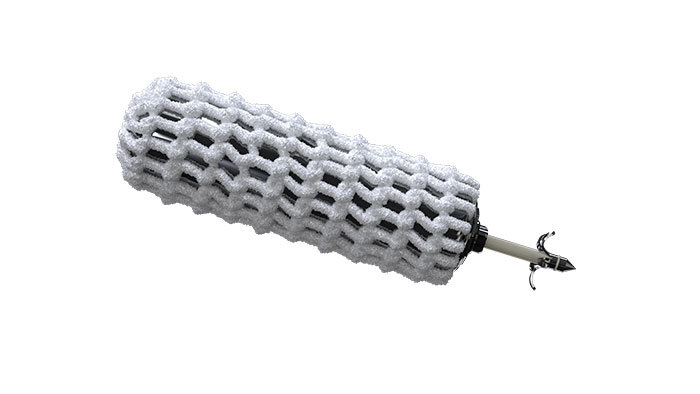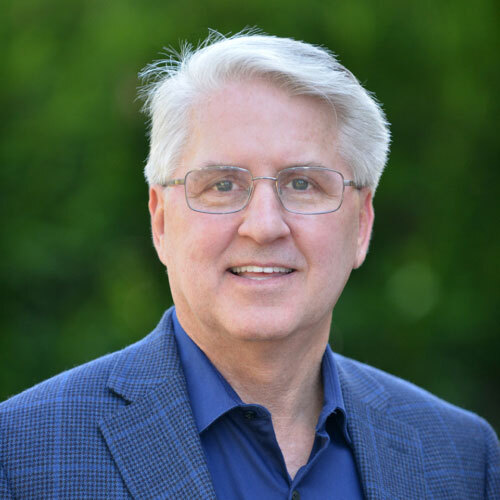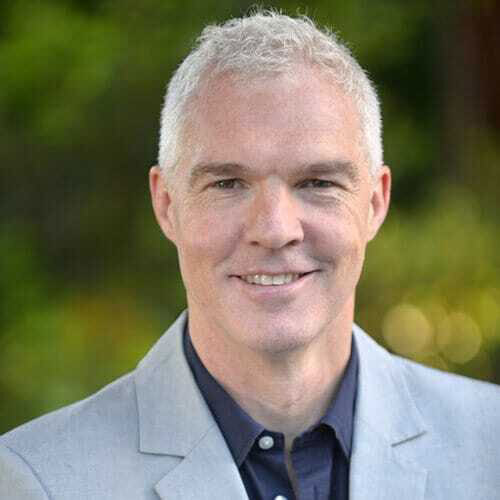How big-hearted EBR Systems is pacing a multi-billion dollar cardiac market

EBR has established the world's first pacing system within the heart for heart failure. Pic: Getty Image
- EBR Systems pioneered the WiSE Cardiac Resynchronization Therapy (CRT) system tech, the size of a grain of rice
- The world’s first pacing system within the heart for heart failure provides pacing stimulation inside the left ventricle
- System granted US FDA breakthrough device designation with four out of five modules for premarket approval submitted
It’s hard to imagine that a device, equivalent in size to a cooked grain of rice, embedded inside the heart’s left ventricle and remotely powered by ultrasound is capable of treating heart failure.
However, EBR Systems (ASX:EBR), established in 2003 in Silicon Valley, has pioneered the WiSE Cardiac Resynchronization Therapy (CRT) system tech – literally the size of a cooked rice grain – which employs proprietary wireless methods to provide pacing stimulation directly inside the heart’s left ventricle.
Looking microscopically inside the device there are more than 100 miniature electrical components put together by hand before it gets rolled up into a cylindrical rice grain shape.

WiSE holds the distinction of being the world’s first pacing system within the heart for heart failure.
The company was described by early investor and well-known venture capitalist Mark Carnegie as having potential to “be as big as Cochlear” when it made its IPO in 2021.
Stockhead recently caught up with CEO and president John McCutcheon, and senior vice president of business development Andrew Shute on their visit to Australia with Morgan’s healthcare analyst Scott Power to discuss the big-hearted company looking to change lives.
How WiSE Works
To understand how EBR’s WiSE system works, it is first necessary to understand where the company fits into the medical specialty of cardiology, which is the treatment of disorders of the heart and cardiovascular system.

McCutcheon says EBR sits in a sub-speciality of cardiology called cardiac rhythm management (CRM). He says CRM is made up of three segments including pacemakers, wearable defibrillators and cardiac resynchronisation therapy. Basic pacemakers are used to treat people with a slow heart beat called bradycardia.
“They pace the right ventricle of the heart with a pacemaker to keep that heart rate up and that is the most mature side of CRM and it was actually started in Australia going back to the 1960s,” he says.
A company called Telectronics, founded in Sydney in 1963, was considered Australia’s first successful high-tech medical electronics company manufacturing pacemakers, implantable defibrillators and cardiac monitors.

“Telectronics was a leader for many years with a lot of the technology they developed subsequently crossing over into other company’s devices,” says Shute.
“This goes off on a tangent but the reason we are listed on the ASX is because there was a Telectronics biomedical engineer called Trevor Moody – a current board member – and after moving to the US he was an early investor in EBR.
“Then in 2017, he connected us to leading Australian investors MH Carnegie and Brandon Capital, along with some of their limited partners including HESTA, Hostplus, AustralianSuper and Statewide Super.”
McCutcheon says the second sector within CRM is defibrillation, where high voltage electrical current is employed to restore a normal heart rhythm during a life-threatening ventricular arrhythmia.
Automated external defibrillators can be found in health facilities and public spaces. McCutcheon says there are also wearable defibrillators programmed to automatically detect cardiac arrest or a life-threatening arrhythmia and offer an electric charge.
“The third segment within cardiac rhythm management where we sit is cardiac resynchronisation therapy and it’s focused on people with ventricular dyssynchrony,” McCutcheon says.
He says in heart failure patients with ventricular dyssynchrony, the right and left side of the heart get out of sync.
“In these patients the right side of the heart is beating, but the left side won’t keep up,” he says.
He says as a result the heart is not squeezing enough blood out and the ventricle gets bigger and bigger.
“You want the blood to go into the heart but most of it to exit when its squeezes,” he says.
The standard of care to treat a heart failure patient with ventricular dyssynchrony is to put a lead outside the left ventricle of the heart and pace both the right and left ventricles simultaneously to get them to synchronise together but the problem is sometimes those leads fail and that’s where EBR’s WiSE system come into its own.
McCutcheon says the WiSE system paces from the left ventricle and after implantation up through a leg vessel like a heart catheterisation procedure will naturally get covered by heart tissue.
“The reason it’s so tiny is there’s no battery or power in there and we remotely power it with ultrasound,” he says.
“We have a transmitter that is under the skin between the ribs and it sends ultrasound energy to the device and it harvests that ultrasound energy and converts it to electrical energy.
“You have the pacemaker on the right side and our device on the left to synchronise both chambers.”
Currently no competition
McCutcheon says if the leads work it is a good therapy and EBR’s business model is focused not on displacing current standard of care but to offer another line of therapy if it fails.
“When they get to us these patients have few options and are in bad shape with the next step a heart transplant list or something really invasive like an LVAD (left ventricular assist device),” he says.
Shute uses an example of a very ill patient who was implanted with WiSE who can now walk 5km a day, swims a few times a week and even enjoys mundane chores like vacuuming.
McCutcheon says three major multinational medical devices and health care companies including Medtronic, Abbott Laboratories and Boston Scientific are the major players focused on right-chamber leadless pacing.
In a bid to overcome the limitations of lead-based pacemakers, both Medtronic and Abbott recently introduced leadless pacemakers for bradycardia, while Boston and Medtronic have released leadless defibrillators.
EBR’s WiSE is the only leadless device to be used to pace the left side of the heart for heart failure. As right-sided leadless pacemakers are 20 times larger than EBR’s WiSE electrode, if they were implanted into the left ventricle, they would likely be thrombogenic, causing blood clots.
McCutcheon says if clots were to form, there would be risk they float to the brain and cause a stroke. In contrast, the WiSE Electrode is so small, it becomes covered in the heart’s own tissue within 30 to 45 days, removing the risk for clot formation.
“We see these right-chamber leadless pacemakers as complementary to EBR’s left ventricle leadless pacing system,” says McCutcheon.
“We look at the growth in their sales as complementary growth to our TAM.
“Up to 30% of patients with these right-side leadless pacemakers will over time require upgrades to include left-side leadless pacing, which can only be done with EBR’s WiSE CRT.”
Offering hope with a de-risked pathway to market
McCutcheon says to date 500 patients have been implanted with the tiny WiSE device, including some approaching 10-year anniversaries.
EBR achieved a key catalyst in May last year, announcing positive results of its pivotal SOLVE-CRT (SOLVE) trial at the Heart Rhythm Society’s (HRS) 2023 conference in New Orleans.
The annual meeting is the premier global electrophysiology conference, attracting the largest gathering of heart rhythm professionals globally.
The SOLVE-CRT trial met safety and efficacy endpoints with statistical significance, enabling the study to conclude, and importantly, providing clinical validation of leadless pacing with the WiSE CRT system.
Furthermore, WiSE has been granted US FDA breakthrough device designation, which qualifies EBR for two reimbursement schemes for inpatients and outpatients.
It has submitted four out of five required modules for FDA premarket approval (PMA).
The final module, related to biocompatibility and device verification testing, is underway and due to be submitted in Q3 CY24 with approval expected in Q1 FY25.
US initial target market
EBR’s initial addressable market is US$2.6 billion, with a market size of >90,000 devices per year with strong potential for growth in subsequent years.
Shute says EBR’s initial target markets are the US, followed by Australia, UK, Germany and France.
He says EBR will initially target the US as it makes up 50% of the global market for CRT and secondly has the highest ASP (average selling price) globally as well.
EBR has upgraded its WiSE CRT system target ASP from US$35k to $US$45k.
He says the company also has strong support in the US from key opinion leaders including those who took part in the clinical trial and are wanting to present and write up reports on sub analysis of EBR’s clinical data.
“Those physicians that we didn’t work with but are still considered thought leaders in the US are also putting their hand up and wanting to participate in that first wave of commercialisation,” Shute says.
“For physicians we have produced training programs using simulators we take to them and from the administrators’ perspective there is no upfront fees and due to high reimbursement the hospitals will break even.
Shute says in the US there are 1906 hospitals that implant CRT devices but ~50% of the entire market is concentrated in 252 of the top hospitals.
“That makes it really for a company of our size that all they need to do in those first few years is focus on those top 252 hospitals,” he says.
EBR plans to grow initial sales to 35 territories by the end of 2027 with each sales team consisting of a sales rep working alongside a clinical or technical expert.
“With success in the US we can start expanding out to other parts of the globe and initially that would be Australia and countries of western Europe so countries with a good reimbursement essentially,” McCutcheon says.
Strong leadership and backing
EBR chairman is Allan Will, internationally recognised for his broad expertise in establishing, financing, managing, and selling medical device companies.
Before EBR, Wills led negotiation of the acquisition of Ardian, which develops catheter-based therapies to treat hypertension and related conditions, by global medtech Medtronic for more than US$800 million.
McCutcheon was encouraged to join EBR as its CEO by Will when he sold the orthopaedic company he was running in 2019 to multinational medical equipment manufacturing company Smith+Nephew.
“It’s a small world so if you work together with someone and it works well you tend to keep gravitating back to the same people,” he says.
“Allan was an early investor in EBR, was chairman of the board and stepped into the role of CEO on an interim basis in 2012 and thought he would be in that role for two years.
“However, in 2019 he was eight years into it and looking to really hand it off.
“Because of our relationship where we’d worked together before he called me when I had that other exit and I was excited to come on board.”
Furthermore, EBR has strong support from long-term investors including those mentioned and Aussie super funds.
“We have support from the supers including Telstra Super, AustralianSuper, Statewide Super, Hesta and Hostplus,” Shute says.
Well-positioned to capitalise on growth
Shute says EBR has existing manufacturers already in place with capability to scale but is also looking to expand in-house manufacturing to meet future demand.
He says as demand increases the company seeks to optimise operations to reduce global supply chain risk.
“Hopefully, later this year we will be able to share details on a new facility we will take on with the goal to bring much more of our manufacturing in-house,” he says.
EBR is also developing a new rechargeable battery that will support the CRT System in becoming a first line therapy option and treat a broader suite of patient.
The company held US$73.4 million on December 31, 2023 and remains well-funded through initial commercialisation.
Power says a key milestone for EBR Systems is the finalisation of its submission to the FDA in Q3 CY24.
“From that point the approval path is relatively clear with 180 days turnaround time subject, of course, to any questions from the FDA,”
“So assuming a clear run, which we think will be the case, the WiSE system will be approved and ready for commercial launch in the US in 2025.
“The market is large, we estimate greater than $2 billion and the system will be complementary to other devices (working on the right side of the heart) owned by major companies like Abbott, Boston Scientific and Medtronic. Watch this space.”
The EBR share price today:
Related Topics

UNLOCK INSIGHTS
Discover the untold stories of emerging ASX stocks.
Daily news and expert analysis, it's free to subscribe.
By proceeding, you confirm you understand that we handle personal information in accordance with our Privacy Policy.








